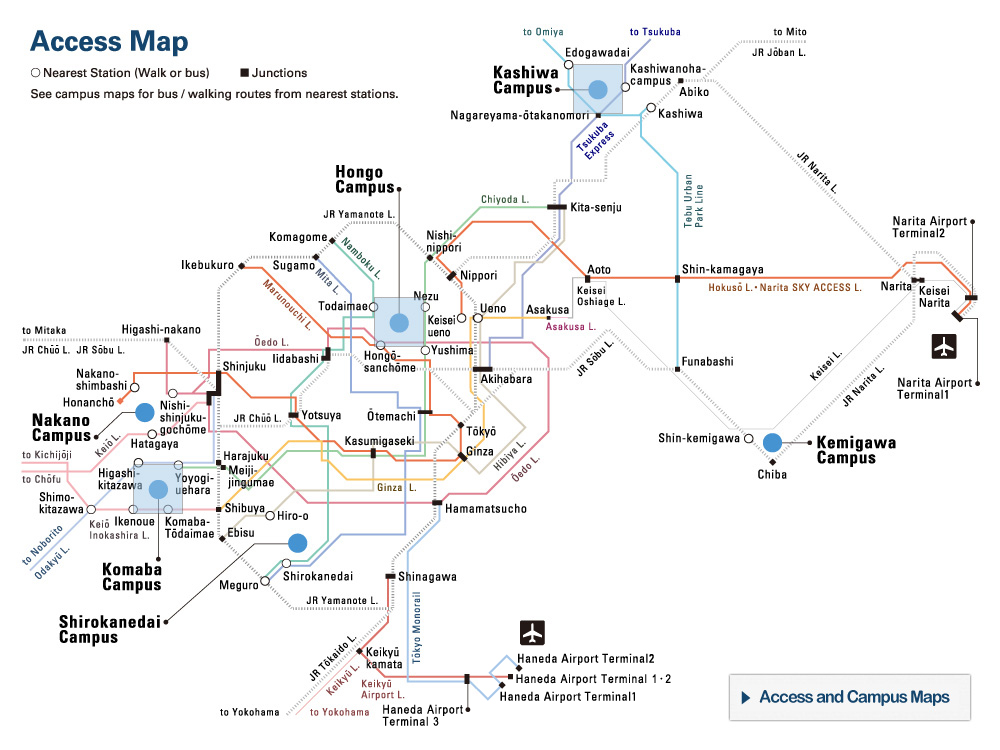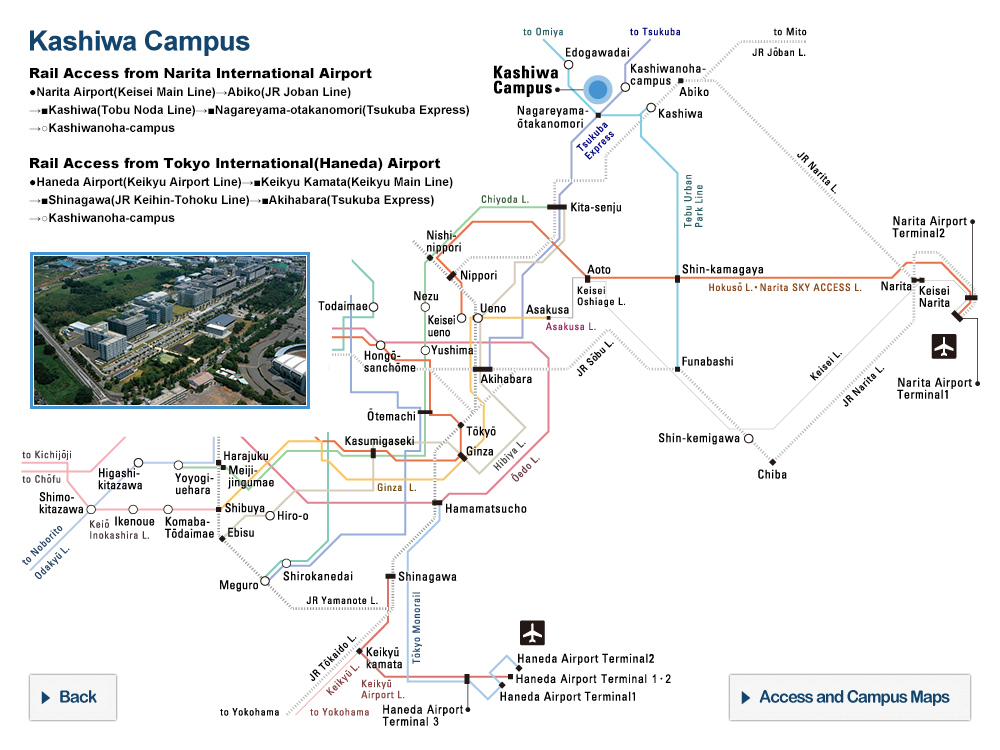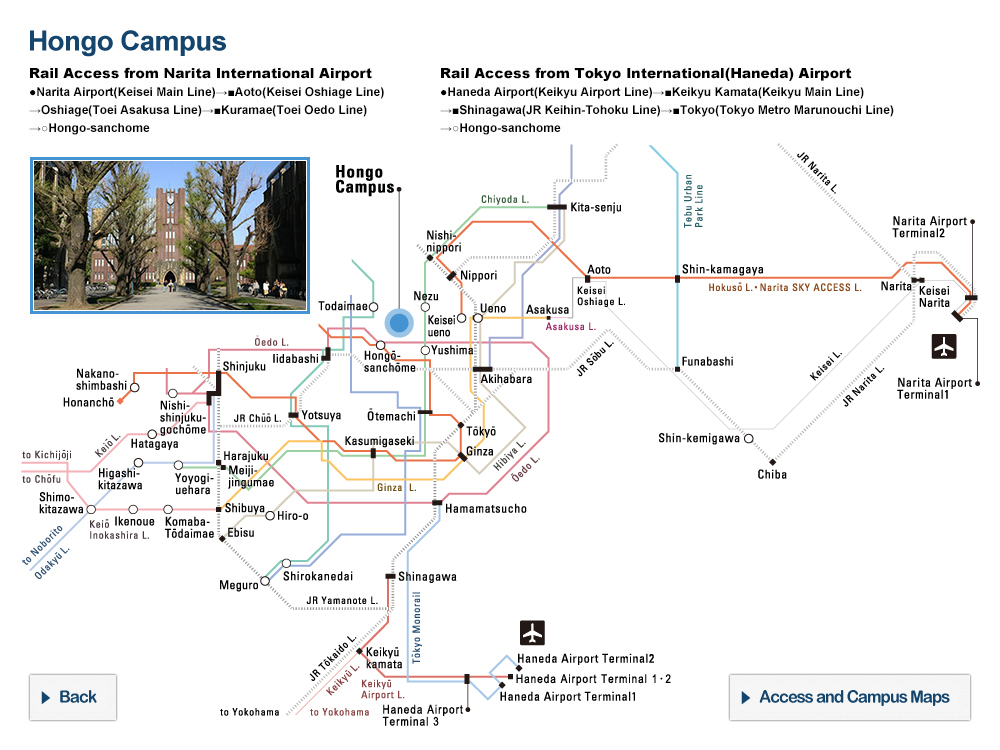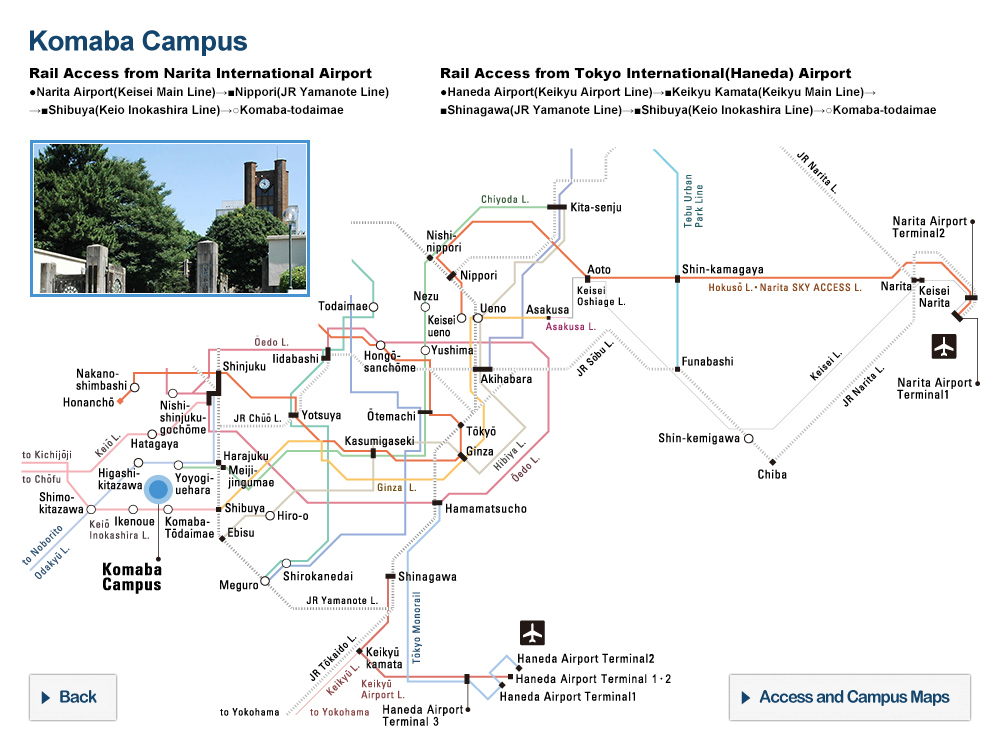16th SCERU Public Seminar
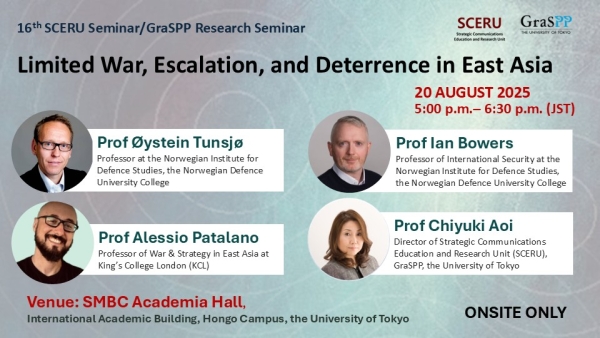
Details
| Type | Lecture |
|---|---|
| Intended for | General public / Enrolled students / International students / Alumni / Companies / Technical college students / University students / Academic and Administrative Staff |
| Date(s) | August 20, 2025 17:00 — 18:30 |
| Location | Hongo Area Campus |
| Venue | SMBC Academia Hall 4th floor, International Academic Research Building Hongo campus, The University of Tokyo |
| Entrance Fee | No charge |
| Registration Method | Advance registration required
Registration Form |
| Registration Period | July 24, 2025 — August 20, 2025 |
| Contact | SCERU (Strategic Communications Education and Research Unit) Office sceru<at*>pp.u-tokyo.ac.jp *Change at to @ |
The Strategic Communications Education and Research Unit (SCERU) and the Graduate School of Public Policy of the University of Tokyo (GraSPP) are pleased to invite you to the seminar as detailed below:
"Limited War, Escalation, and Deterrence in East Asia"
* The venue will open at 4:40 p.m.
* Please note that this event will be held on-site only.
* For security reasons, please bring your ID with you to enter the venue.
* LANGUAGE: English
OVERVIEW:
This seminar brings together leading experts on East Asian security to examine the dynamics of limited conflict, escalation risks, and deterrence in the maritime domain of East Asia. The discussion focuses on the interplay between major power rivalry, operational realities at sea, and the ambiguous space between peace and war. In addition, attention is given to the meaning and significance of strategic communications in relation to coercion and deterrence within the "grey zone."
This seminar provides a comprehensive look at the evolving security landscape in East Asia, offering insights into the operational, technical, and geopolitical dimensions of contemporary conflict and competition.
PANEL PRESENTATIONS:
1. The U.S.-China Stability-Instability Paradox: Limited War in East Asia
Øystein Tunsjø, Professor, Norwegian Institute for Defence Studies
With China and the United States seemingly locked in intensifying and enduring competition, many analysts compare today’s U.S.-China rivalry to the one between the Soviet Union and the United States during the Cold War. This article draws on the stability-instability paradox to compare the prospects for limited war in these scenarios. We identify two factors -- geography and technology -- that affect the likelihood of the paradox leading to conflict. Whether strategic nuclear stability increases or decreases the likelihood of limited conflict likely depends on how each side in a conflict dyad regards the prospects for limiting a conflict. (The presentation is based upon a co-authored journal article with Henrik Stålhane Hiim, forthcoming in International Security)
2. Contested Waters, Presence, and the Risk of Escalation in Maritime East Asia
Ian Bowers, Professor of International Security, Norwegian Institute for Defence Studies
This presentation explores the risk of escalating conflict in maritime East Asia with a focus on the presence of adversarial navies and maritime law enforcement organisations in contested waters. It argues that such interactions at sea while raising the risk of localised conflict are unlikely to result in wider conflict escalation. However, the context of such interactions including the level of power symmetry between the actors on a local tactical and strategic level and the location of clashes play an important role in determining the risk of wider escalation.
3. Fifty Shades of Grey or Blends of Hybrid War? Conflict in the Age of Contestation
Alessio Patalano, Professor of War & Strategy in East Asia, King’s College London
This presentation explores the increasing gap between peace and war. It suggests that, whilst wars —as a complex national and societal endeavour with a clearly defined legal construct —are becoming less frequent, military operations, robust forms of coercive action, and intense bursts of fighting are becoming increasingly common as currency in the management of international affairs. In this fractured and contested context, there remains considerable ambiguity about how to differentiate grey zone coercion and hybrid actions. The presentation argues that this lack of clarity invites probing, testing, and further escalation, rather than deterring their use.
4. Strategic Communications and Ambiguity in Grey Zone Deterrence
Chiyuki Aoi, Director of Strategic Communications Education and Research Unit (SCERU), GraSPP, The University of Tokyo
In this presentation, strategic communications is understood as the long-term shaping and shifting of dominant discourses with in societies, taking a holistic approach grounded in liberal values and fundamental freedoms. Rather than focusing on short-term, reactive exchanges or tactical messaging, the emphasis is on fostering credibility, consistency, and adaptability to counter incremental coercion and support regional stability. The presentation highlights the importance of strategic communications in influencing the security environment and addressing adversaries’ efforts to exploit ambiguity through legal and normative manipulation, ensuring clarity of purpose and intent in the face of such challenges.
Speakers' BIO
"Limited War, Escalation, and Deterrence in East Asia"
* The venue will open at 4:40 p.m.
* Please note that this event will be held on-site only.
* For security reasons, please bring your ID with you to enter the venue.
* LANGUAGE: English
OVERVIEW:
This seminar brings together leading experts on East Asian security to examine the dynamics of limited conflict, escalation risks, and deterrence in the maritime domain of East Asia. The discussion focuses on the interplay between major power rivalry, operational realities at sea, and the ambiguous space between peace and war. In addition, attention is given to the meaning and significance of strategic communications in relation to coercion and deterrence within the "grey zone."
This seminar provides a comprehensive look at the evolving security landscape in East Asia, offering insights into the operational, technical, and geopolitical dimensions of contemporary conflict and competition.
PANEL PRESENTATIONS:
1. The U.S.-China Stability-Instability Paradox: Limited War in East Asia
Øystein Tunsjø, Professor, Norwegian Institute for Defence Studies
With China and the United States seemingly locked in intensifying and enduring competition, many analysts compare today’s U.S.-China rivalry to the one between the Soviet Union and the United States during the Cold War. This article draws on the stability-instability paradox to compare the prospects for limited war in these scenarios. We identify two factors -- geography and technology -- that affect the likelihood of the paradox leading to conflict. Whether strategic nuclear stability increases or decreases the likelihood of limited conflict likely depends on how each side in a conflict dyad regards the prospects for limiting a conflict. (The presentation is based upon a co-authored journal article with Henrik Stålhane Hiim, forthcoming in International Security)
2. Contested Waters, Presence, and the Risk of Escalation in Maritime East Asia
Ian Bowers, Professor of International Security, Norwegian Institute for Defence Studies
This presentation explores the risk of escalating conflict in maritime East Asia with a focus on the presence of adversarial navies and maritime law enforcement organisations in contested waters. It argues that such interactions at sea while raising the risk of localised conflict are unlikely to result in wider conflict escalation. However, the context of such interactions including the level of power symmetry between the actors on a local tactical and strategic level and the location of clashes play an important role in determining the risk of wider escalation.
3. Fifty Shades of Grey or Blends of Hybrid War? Conflict in the Age of Contestation
Alessio Patalano, Professor of War & Strategy in East Asia, King’s College London
This presentation explores the increasing gap between peace and war. It suggests that, whilst wars —as a complex national and societal endeavour with a clearly defined legal construct —are becoming less frequent, military operations, robust forms of coercive action, and intense bursts of fighting are becoming increasingly common as currency in the management of international affairs. In this fractured and contested context, there remains considerable ambiguity about how to differentiate grey zone coercion and hybrid actions. The presentation argues that this lack of clarity invites probing, testing, and further escalation, rather than deterring their use.
4. Strategic Communications and Ambiguity in Grey Zone Deterrence
Chiyuki Aoi, Director of Strategic Communications Education and Research Unit (SCERU), GraSPP, The University of Tokyo
In this presentation, strategic communications is understood as the long-term shaping and shifting of dominant discourses with in societies, taking a holistic approach grounded in liberal values and fundamental freedoms. Rather than focusing on short-term, reactive exchanges or tactical messaging, the emphasis is on fostering credibility, consistency, and adaptability to counter incremental coercion and support regional stability. The presentation highlights the importance of strategic communications in influencing the security environment and addressing adversaries’ efforts to exploit ambiguity through legal and normative manipulation, ensuring clarity of purpose and intent in the face of such challenges.
Speakers' BIO



